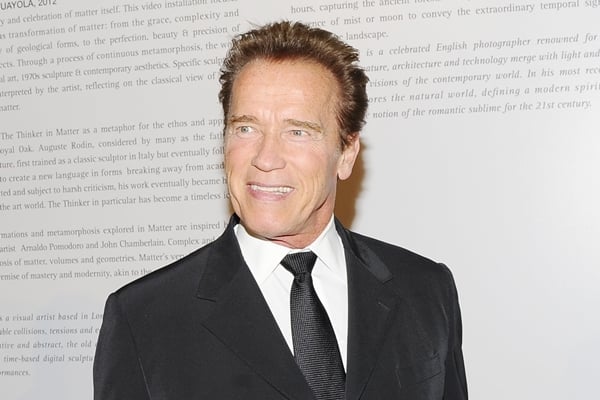
Photo: © 2014 Patrick McMullan Company, Inc.
Before the official portrait of former California governor Arnold Schwarzenegger was recently unveiled at the California State Capitol Museum in Sacramento, the actor-politician had the artist cover up an image of his estranged wife, Maria Shriver, reports the San Francisco Chronicle.
The work of Austrian artist Gottfried Helnwein, the photo-realistic painting will be installed in the museum’s third floor rotunda—but not as it was originally envisioned. Schwarzenegger’s former assistant Clay Russell told the Chronicle that during the “Governator’s” administration, the portrait, which then depicted Schwarzenegger wearing a pin featuring Shriver’s face on his lapel, was stored at the then-governor’s office at Oak Productions in Santa Monica.
At the time, Shriver and Schwarzenegger’s marriage had not yet been shattered by the revelation that he had fathered a son with the family maid. As Russell points out, “it was unusual for a portrait to be done so soon—a couple of years into the administration.”
Presumably, the now-missing Shriver button is the “one little interesting detail” in the portrait, that Helnwein told the Hollywood Foreign Press Association “I cannot give away because I am not allowed to tell, but it was very important and meaningful to the governor.”
Russell thinks the decision to paint over the Shriver pin is understandable. “Considering everything, it’s not that odd,” he said. “It would have been weirder if it was already up and he had removed it.”
The unveiling of Arnold Schwarzenegger’s official portrait by Gottfried Helnwein at the California State Capitol Museum, Sacramento.
Photo: Rich Pedroncelli, courtesy Associated Press.
The tradition for California governors to have their portraits done after leaving office dates back to 1879. According to the official guidelines on the California State Capitol Museum website, “each governor may select the artist to paint their portrait so the portrait reflects the individual governor’s personality,” although the work must be an oil painting and the “appearance of the portrait should be in harmony with the capitol’s dignified surroundings.” (Former governor Jerry Brown, for instance, broke with tradition in 1984 with a more abstract painting from Don Bachardy.)
The rules, officially codified in 1931, also specify that the painting should “be commissioned after governors retire from office,” a guideline that would have likely eliminated the need to alter the painting, should Schwarzenegger have followed it.